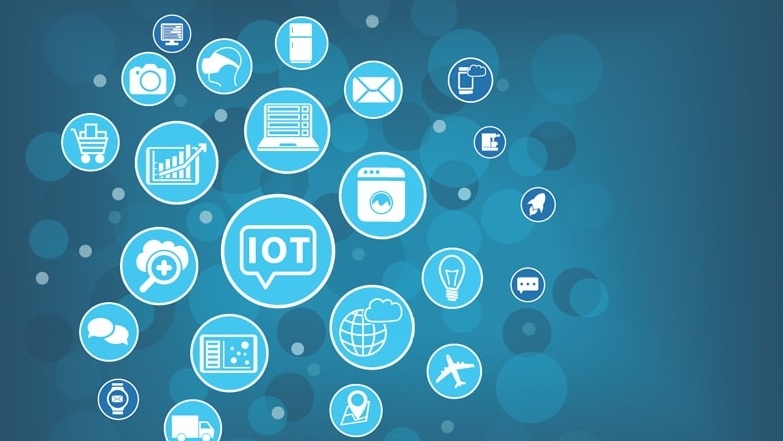Business leaders rely on IoT data management to implement IoT solutions effectively and securely. Effective management of data in the industrial internet of things (IIoT) can play a significant role in lowering the impact of cybersecurity risks. Plus, it ensures the privacy of data.
Data management for industrial IoT also allows business owners to minimize costs and efficiently implement IoT solutions. More organizations are considering applying IoT data management to their day-to-day activities. They do this with the hope that the challenges IoT infrastructure faces do not outweigh the pros.
By the end of this post, you will have in-depth knowledge of what the IoT data management market and IIoT integration service are.
Industrial IoT Data Management

Industrial data management is where IoT technology and data are brought together and applied in the manufacturing industry. It is sometimes referred to as IIoT (Industrial Internet of Things) or Industry 4.0. The aim of using IoT technology in industrial applications is to help increase productivity, automation, and efficiency. The various industries where IoT is applied in practice include:
- Telemetry data to manufacture autonomous vehicles
- Healthcare sector to produce health monitoring gadgets
- SCADA (Sensors and Supervisory Control and Data Acquisition) systems to produce oil and gas
- Factory equipment, devices, and machines used in manufacturing
Organizations utilize IIoT to determine the power of data their machines created over many years. Once they know this, they then use that data to get to real-time analytics, which, in turn, helps them come up with faster and more precise business decisions.
Industrial IoT Applications
As the world keeps advancing, the use of IIoT in the manufacturing, retail, and healthcare sectors continues to expand. In the manufacturing sector, IIoT is used in factory automation to increase operational efficiency. It is also used in location tracking to locate parts, inventory, and tools. Another area IIoT is applied under manufacturing is predictive maintenance. Here, IIoT helps maximize uptime and disaster tolerance.
Industrial IoT technology is also applied in the retail sector. And what is amazing about it is that it is suitable both for online and offline applications. Retailers rely on it to determine what, where, and when customers make purchases. They also use it to improve behavior analytics as well as to create smart shelves. These shelves instantly alert retailers when items are running low or put in the wrong places.
Another practical application of IIoT is in the healthcare sector. Here, the individuals concerned use data from medical devices to improve patient outcomes. They feed this data into clinical research processes as well as treatment efficiency studies. People concerned can also use data from aforementioned medical devices to track room or bed occupancy as well as staff proximity. All these are done to enhance care delivery as well as the hospital experience.
The Importance of IoT Data Management
There are lots of reasons why businesses should consider integrating IoT into their daily activities. Some of these are:
1. Understanding the Needs of Users
Data management in IoT gives you a chance to look at sensory data as well as check that particular moment in time when a user made a change. These, in return, make it easy to optimize smart algorithms. Once all these are sorted, you can redesign your product or even retain it as long as it is offering a better user experience.
2. Creating Effective Systems
You need lots of individual devices working together to provide complex IoT solutions. While these devices may work perfectly individually, they might behave in unprecedented ways when designed to work together. That being said, you can carry out IoT predictive analytics to identify problems that may arise early on. The analytics also help you check if the performance of the entire system is as predicted.
3. Predicting the Wear and Tear of an Asset
IoT data management comes in handy when expecting the wear and tear of an asset. It allows you to conduct an exploration throughout the life cycle of an asset. This means you will know whether users are operating outside of the expected patterns. Once you have gathered this type of information, you can then pinpoint areas where your product requires reinforcement, repairs, and maintenance.
Traditional Vs. IoT Data Management

While traditional (static) data management is linear, IoT data management is not. Ideally, the skills and technology you need to analyze IoT-generated data are completely different from those required to analyze traditional data.
Another key difference between these two types of data management is that IoT-generated data can be delivered in real time, which is not the case with static-generated data. Ideally, the fact that IoT can provide real-time data means it is worth applying to such industries as defense, telecom, and banking.
The difference between traditional and IoT data management is also seen in the processing mechanism. It is safe to say that the processing mechanism of traditional data is fairly easy. All you need is the help of standard querying languages as well as standard programming languages to create analytics. The processing mechanism of IoT data is not so straightforward. Many people refer to it as big data, with Hadoop being the most popular framework for processing big data to date. The reason why querying IoT data is no easy task is that IoT is still evolving and there is plenty of room needed to make tools user-friendly.
Must-Have Capabilities for IoT Data Management
The following are the key capabilities for IoT data management:
- Enterprise-grade platform: Provides highly scalable, robust, cloud-based, and secure applications.
- Creating rich and functional applications: IoT data management uses complex data and algorithms to support the development of functionally-rich applications.
- Real-time operational insight: Supports both analytical and operational applications from the same source of data.
- Unlocking the agility of businesses: IoT data management can support lots of new and frequently-changing requirements in businesses. By so doing, it leads to a fast and endless evolution of the underlying data model.
Conclusion
Vehicles, buildings, and even toothbrushes are becoming increasingly controlled by sensors. And this is where data management for industrial IoT comes in handy. There is a lot of buzz around IoT data management. With it, you will be able to greatly improve the productivity and efficiency of your business.








